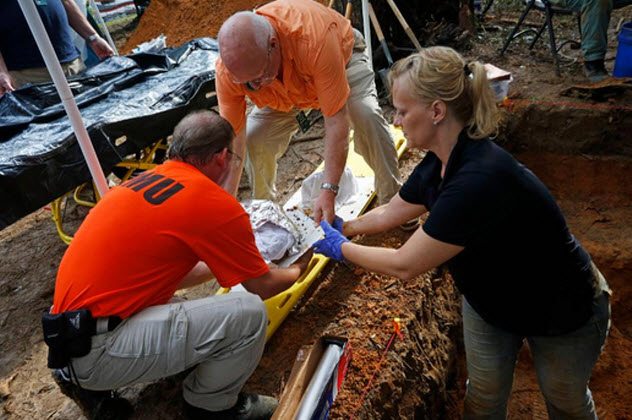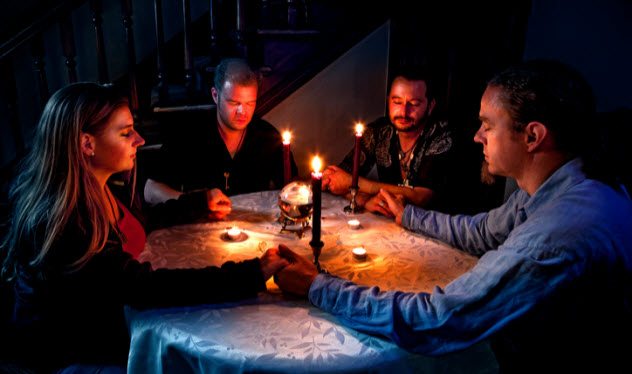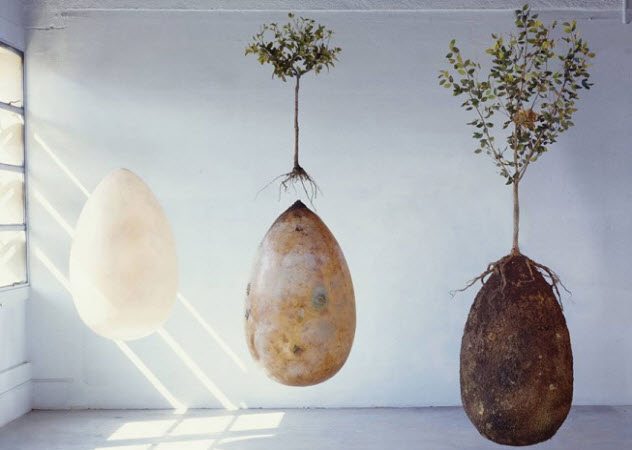 History
History  History
History  Miscellaneous
Miscellaneous 10 Ancient Etiquette Rules You Never Knew Existed
 Our World
Our World Planet Earth’s 10 Most Hardcore Natural Creations
 Movies and TV
Movies and TV 10 Times Twin Movies Competed with Each Other
 The Arts
The Arts 10 Masterpieces Plucked from the Artist’s Subconscious
 Crime
Crime 10 Fascinating Facts about Rikers Island
 Pop Culture
Pop Culture 10 Things You Might Not Know about Dracula
 Weird Stuff
Weird Stuff 10 Everyday Activities That Were Once Considered Illegal
 History
History Ten of History’s Hidden Secrets: Stories 99% Don’t Know About
 Movies and TV
Movies and TV 10 Actors Who Infamously Stormed Off Set While Filming
 History
History 10 Influencers Who Lived Centuries before Social Media
 Miscellaneous
Miscellaneous 10 Ancient Etiquette Rules You Never Knew Existed
 Our World
Our World Planet Earth’s 10 Most Hardcore Natural Creations
Who's Behind Listverse?

Jamie Frater
Head Editor
Jamie founded Listverse due to an insatiable desire to share fascinating, obscure, and bizarre facts. He has been a guest speaker on numerous national radio and television stations and is a five time published author.
More About Us Movies and TV
Movies and TV 10 Times Twin Movies Competed with Each Other
 The Arts
The Arts 10 Masterpieces Plucked from the Artist’s Subconscious
 Crime
Crime 10 Fascinating Facts about Rikers Island
 Pop Culture
Pop Culture 10 Things You Might Not Know about Dracula
 Weird Stuff
Weird Stuff 10 Everyday Activities That Were Once Considered Illegal
 History
History Ten of History’s Hidden Secrets: Stories 99% Don’t Know About
 Movies and TV
Movies and TV 10 Actors Who Infamously Stormed Off Set While Filming
10 Ways The Dead Can Help The Living After They Are Gone
Since the dawn of mankind, we have always had a healthy respect for the dead. We worshiped them and buried them with jewels and gold. We built mausoleums and designed headstones so that our memories of the deceased would never fade. We memorialized them in paintings and statues—anything to keep our loved ones with us a bit longer. At one time, it was even legal to keep a preserved body in the home.
But what if someone leaves this world alone? No family, no friends, no one to mourn his passing. He may be gone but possibly not forgotten. Here are 10 ways that the dead can leave their mark on the world after death.
10 Organ Transplantation

Every year, thousands of people are added to the waiting lists for organ replacements. A shocking average of 20 people per day die while waiting for a transplant because there are not enough organs to go around.
Whether it’s a new heart, liver, or kidney, a number of organs in the human body can be replaced. Usually, an otherwise healthy person can supply enough organs to help eight people. Even corneas can be transplanted.
The simplest way to help lower these totals is to sign an organ donor card or check off the organ donation box on your driver’s license. Then, once the person has passed on, doctors can take whichever organs are needed at the time. In this way, the deceased can help the living and live on through another.[1]
9 Last Will And Testament

Back in the time of the Egyptians, belongings were entombed with the body. Native Americans burned the person’s possessions along with the body on funeral pyres. Vikings loaded the body of a fallen warrior, his belongings, and a dog into a longboat, set it on fire, and pushed it out to sea. The idea was that the warrior would be able to use his possessions on the other side, with the dog there as a companion.
A Last Will And Testament is a legal document that specifies the disposition of someone’s belongings after death and can wind up being very important. The Last Will and Testament was used in the United States as far back as George Washington.
As civilization advanced, people began to gather more and more belongings, including works of art, jewelry, collectibles, and money or bonds. It started to become a problem deciding which relative or institution would get which possessions.[2]
There are numerous accounts of family members killing each other over a painting or a tract of land. Even with a will, there can still be family infighting but probably not as bad as it might be without one.
8 Body Farms

The history of forensics dates back thousands of years, with the more modern idea of fingerprinting used for the first time in 1892. But fingerprinting was just the beginning. Modern forensics now includes the investigation of any crime-related death. The problem is: How do you learn this specialized form of investigation?
This is where body farms come into play. The original one was set up close to the University of Tennessee at Knoxville in 1971. It is a research facility designed to study how the human body decomposes in different conditions. Bodies are left out in open fields and swampy areas, buried in man-made bogs, and even hung in trees.
Varying rates of decomposition in bodies in the same environment can signify that death occurred in different ways. The rates are then cataloged and used to study causes of death.
Most of the bodies are “John Does” or “Jane Does.” These unidentified individuals were never claimed after death, although it is perfectly legal to leave your own remains to a college that runs a body farm. As of early 2018, there were seven body farms in operation across the United States. The newest one opened in Florida in 2017.[3]
7 Medical Schools

While no one is advocating the creation of a Frankenstein’s monster, the use of human remains for medical school experimentation is an acceptable teaching tool worldwide. Whether future doctors are studying the results of accidents, poisoning, old age, or disease, the dissection of an actual human body can yield far more information than a book or medical journal.
An unclaimed body can be sent to a medical school, but it’s more likely that they use cadavers from people who willed their bodies to science.[4] If you were passionate about treating or curing a certain disease while you were alive, it is possible to request that your body be used for a study of that particular ailment.
6 Fertility Clinics

Most couples try to start a family eventually. When normal impregnation doesn’t work, couples may decide to go through in vitro fertilization (IVF). In an IVF procedure, sperm is gathered from the husband or boyfriend and placed in a petri dish along with a small number of eggs from the wife or girlfriend and a growth medium.
The dish is then placed in an incubator in the hope that one or more of the eggs may be fertilized. If the procedure is successful, then any fertilized eggs are placed into the woman’s womb. The pregnancy goes on from there.[5]
Occasionally, fate steps in and throws a monkey wrench into the plans. Either the man or woman may discover that a medical problem has kept the pregnancy from working. Cancer, hormonal imbalances, sexually transmitted diseases, and many other causes may stop women from becoming pregnant. Still, there is hope.
Volunteers may donate eggs or sperm to help couples who want a family. Occasionally, these donations come from the dying. Although she is suffering from cancer, a woman may donate eggs in the hope that her child will be born in the future.
A man may donate sperm while awaiting an organ transplant to save his life. If he doesn’t make it, his wife or girlfriend may have his baby later on. In this way, even the dying can help the living to bring new generations into existence.
5 Stem Cell Research

Stem cells were first discovered in 1978 in the cord blood of a human embryo. There are several kinds of stem cells, with the most famous being embryonic stem cells.
Embryonic stem cells have the ability to divide and become any kind of cell in the human body. As a result, these stem cells may be used to repair damaged cells in a body.[6]
In 2012, scientists discovered that living stem cells could be harvested from the muscle tissue of a human corpse 17 days after the body had died. It is possible that stem cells could live longer than that, but more research has to be done. You can donate your body to science and specify that you want your stem cells harvested for research and use.
4 Mediums And Seances

This one is a matter of personal belief. When someone shuffles off his mortal coil, some people believe that the soul may stay behind for a while. Whether the soul has unfinished business or simply does not recognize that he has actually died, the bereaved may decide to use the services of a medium to try to contact the dead. Even former First Lady Mary Todd Lincoln invited various mediums to the White House in an attempt to speak to her young son, Willie, who had died of typhoid fever.
One of the most famous debunkers of the spiritual world was magician Harry Houdini. Early in his career, he ran phony seances of his own. After Houdini’s mother died, however, he became obsessed with trying to contact her. This led to his war against phony mediums and seances.
On his deathbed in 1926, he told his wife that he would try to contact her from beyond the grave if it were possible. Every Halloween, seances are held all over the United States in an attempt to reach him. So far, they have all been unsuccessful. Houdini remains silent.[7]
On the other side of the coin is the story of Kate and Margaret Fox. In the 1800s, they held the first seance ever written about. The two girls came up with a system of table raps to signify certain answers to questions asked of ghosts. The Foxes invited neighbors and friends to witness the seances. Most people were astounded by the validity of the responses.
3 Natural Resources

In the United States, most of the dead are either buried in underground graves encased in concrete or cremated. The ashes of cremated bodies are placed in urns, which are often put in mausoleums aboveground. (Sometimes, we skip cremation and put the whole body in the mausoleum.)
Years ago, bodies buried in wooden coffins were susceptible to water leakage, animals, insects, and rot. Before that, bodies were just piled in open pits. If not preserved in any way, these bodies broke down over the years to become part of the soil in which they were buried. Like the dinosaurs, ancient bodies became part of the planet’s oil reserves.
There may be other choices available in the near future. It has become possible to use cremation ashes or complete dead bodies to grow trees, thus adding to the natural resources of the planet and cutting down on the amount of land needed to expand cemeteries.
The deceased’s ashes are placed in a special urn along with a planting soil mixture, plant food, and a seedling from the dead person’s favorite tree. The urn is then planted in the ground, watered, and given enough sunshine for the seedling to grow into a tree.[8]
Still in the design stage is the “Capsula Mundi,” a large egg-shaped container that will hold a human body and serve as a basic feeding container for the growth of a tree. Someone can purchase a burial capsule and choose a favorite tree.
After death, the body is loaded into the capsule and buried with the chosen seedling touching the top of the capsule. The body then acts as food for the tree. If the person chose an apple tree seedling, his descendants can pick apples from the tree years later.
2 Life Insurance Policies

The concept of life insurance has been around since the ancient Romans. Around 100 BC, a Roman military leader named Caius Marius came up with the idea of a funeral association. In case of accidental death, his soldiers would band together and pay the funeral expenses of their fallen comrades.
The Romans believed that anyone who did not get a proper burial would come back to haunt people as an unhappy ghost. These funeral groups were very popular with the government as they believed that everyone had the right to a proper burial.
As time passed, the idea of setting up a stipend for survivors of lost soldiers was also started, ensuring that wives and children were cared for as well. When the Roman Empire fell, the idea of life insurance disappeared for a while.
It resurfaced in the 1680s when a group of underwriters founded Lloyd’s Coffee House in London, a place where shipowners, captains, and merchants could discuss shipping news. Lloyd’s Coffee House eventually became known as Lloyd’s of London, the group that insures such items as singer Bruce Springsteen’s voice.
The sale of life insurance policies grew in number after World War I. By the start of the Great Depression in 1929, more than 120 million life insurance policies were in effect. The end of World War II and the economic boom that followed also brought a surge in the number of life insurance policies.[9]
By mid-1970, close to 75 percent of all adults in the United States and at least 90 percent of all married couples had life insurance of one form or another. Due to economic downturns, it was estimated that only 44 percent of United States households had individual life insurance policies as of 2013. This was a 50-year low.
1 Trying To Get A-Head
This one seems more like science fiction. In 1959, Russian scientist Vladimir Demikhov removed the head of a terrier-type dog and successfully kept it alive for days by using a pump for blood circulation. The head could apparently hear, taste, and smell things.
Later, Demikhov transplanted the head and front legs of one dog onto another larger dog. Since then, more experiments have been conducted on dogs, monkeys, mice, and rats.
As a way for a patient to recover movement after a spinal cord injury, scientists are looking to attempt a human head transplant. Italian neurosurgeon Sergio Canavero is hoping to do the first human head transplant sometime in 2018 with the help of a Chinese volunteer.[10]
Although most doctors are skeptical about the success of such a procedure, Canavero insists that he is only a few months away from publishing papers that will prove him right. And where will the new body come from? A donor, just like with organ transplants. This may be the strangest way that the dead could someday help the living.
Joan is a little old nerd.
Read more stories about the effect of the dead on the living on Top 10 Stories About The Dead Reaching Out To The Living and 10 People Who Lived With Dead Relatives.








